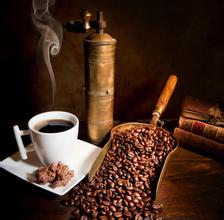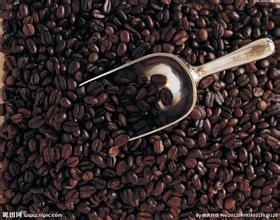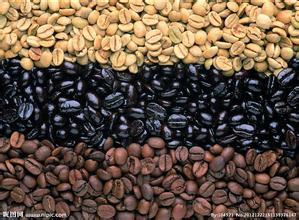Introduction of eight different producing areas of coffee beans in Guatemala
Ekataru Valley
Up to 2000 meters (6500 feet) above sea level, with dense shade and unique ecology, the nearby Fuego volcano erupts, making its coarse, sandy soil rich in a variety of minerals. Temperate sea breezes from the Pacific and a seasonal climate allow coffee in this region to be dried by sunlight and processed according to traditional family methods that have been accumulated over the years.
[characteristics] the acidity is obvious, the dry and wet fragrance is remarkable and pleasant, the alcohol thickness is good, and the aftertaste is clear and long.
Koban of Rainforest
It is cloudy and rainy all the year round and the climate is cool. The vast majority of Koban coffee in the rainforest is grown in the obviously undulating and foggy mountains of the region and is deeply influenced by limestone and clay in the Atlantic basin. Koban has two seasons: the rainy season and the rainy season.
[characteristics] obvious fresh fruit flavor, balanced mellow thickness, pleasant aroma.
Antigua coffee
Rich volcanic soil, low humidity, plenty of sunshine and cool nights are the characteristics of this producing area. The valley is surrounded by three volcanoes: Agua, Fuego and Acatenango. Volcanic ash from the eruption makes the soil of Antigua rich in minerals. Volcanic pumice can maintain humidity and overcome the lack of rainfall in Antigua; dense tree shade protects against occasional frosts.
[features] Wet fragrance is rich, balance is good, sweetness is high, taste is elegant.
Tiny Nanguo Highland
Of the three major non-volcanic coffee-producing regions in Guatemala, the Weitango Highlands has the driest climate and the highest elevation. The dry and hot wind from Mexico's Tehuantepec plateau protects the coffee from frost and can be grown to 2000 meters (6500 feet). Because of its remote location, all coffee farmers have to process their own coffee. Fortunately, there are so many streams in the area that small processing plants can be set up almost anywhere.
[characteristics] High acidity, pleasant, high alcohol thickness and wine aftertaste.
Waiqiangsi plateau
The area is of volcanic soil, with high altitude, sufficient rainfall and great humidity variation. Ash from Pacaya, Guatemala's most active volcano, provides important minerals for the soil in the region. There is plenty of sunshine in the dry season, and although the clouds and dew are heavy in the morning, they dissipate quickly. As a result, 100% of the coffee in the area is processed in the full sun.
[characteristics] the acidity is bright and consistent, the aroma is sufficient, and the thickness of alcohol is delicate.
New Oriental
Coffee in this area has been grown entirely by small farmers since the 1950s, and now every farmer in the mountains is a coffee production unit. This area, once the most remote and poorest part of Guatemala, is now alive and well. Rainy, cloudy, New Oriental ancient times is a volcanic area, soil volcanic metamorphic rock evolved, rich in minerals, balanced nutrition, different from other volcanic coffee producing areas.
[features] the palate is well-balanced, mellow and full-bodied, with chocolate flavor.
Traditional Atitlan
Atitlan is one of the five largest volcanic coffee producing areas in Guatemala, and its soil organic matter is the most abundant among the five volcanic coffee producing areas. 90% of the traditional Atilan coffee is grown on the violent volcanic slopes of Lake Attila, where the daily breeze stirs the lake, which is an important factor affecting the microclimate of the region. The area has accumulated excellent planting and processing techniques for a long time.
[characteristics] the aroma is refreshing, the acidity is bright and the mellow thickness is full.
San Marco, vol.
San Marco has the hottest climate of the eight largest coffee producing regions in Guatemala, with a maximum rainfall of 200inches (5000 mm). The rainy season is earlier than in other areas, and coffee trees bloom earlier. Like other remote areas of Guatemala, volcanic San Marco coffee is grown and processed by small farmers. Due to frequent rainfall in the rainy season, most coffees are pre-dried in the sun and then dried in a Guardiola dryer.
[characteristics] there are subtle floral aromas in the aroma and taste, obvious acidity and good mellow thickness.

Important Notice :
前街咖啡 FrontStreet Coffee has moved to new addredd:
FrontStreet Coffee Address: 315,Donghua East Road,GuangZhou
Tel:020 38364473
- Prev

Origin of Salvadoran coffee
Flavor: balanced taste, excellent texture recommended baking method: moderate to deep, there are many uses of high-quality beans: El Salvador SHB taste characteristics: sour, bitter, sweet mild Salvadoran coffee and Mexico, Guatemala as the producer of Asa, Meldo, and is fighting for the top one or two in China and America with other countries. The highland of origin is of equal size.
- Next

Introduction of Honduran flavor and taste
Flavor and taste characteristics: full of particles, uniform taste, tobacco flavor the Republic of Cuba is located in the West Indies, with a detached and primitive natural environment, the beautiful Caribbean Sea and the world-famous Crystal Mountain Coffee. In 1748, coffee was introduced into Cuba from Domiga, and Cuba began to grow coffee ever since. The land in Cuba is fertile, the climate is humid, and Rain Water is abundant.
Related
- Does Rose Summer choose Blue, Green or Red? Detailed explanation of Rose Summer Coffee plots and Classification in Panamanian Jade Manor
- What is the difference between the origin, producing area, processing plant, cooperative and manor of coffee beans?
- How fine does the espresso powder fit? how to grind the espresso?
- Sca coffee roasting degree color card coffee roasting degree 8 roasting color values what do you mean?
- The practice of lattes: how to make lattes at home
- Introduction to Indonesian Fine Coffee beans-- Java Coffee producing area of Indonesian Arabica Coffee
- How much will the flavor of light and medium roasted rose summer be expressed? What baking level is rose summer suitable for?
- Introduction to the characteristics of washing, sun-drying or wet-planing coffee commonly used in Mantenin, Indonesia
- Price characteristics of Arabica Coffee Bean Starbucks introduction to Manning Coffee Bean Taste producing area Variety Manor
- What is the authentic Yega flavor? What are the flavor characteristics of the really excellent Yejasuffi coffee beans?

